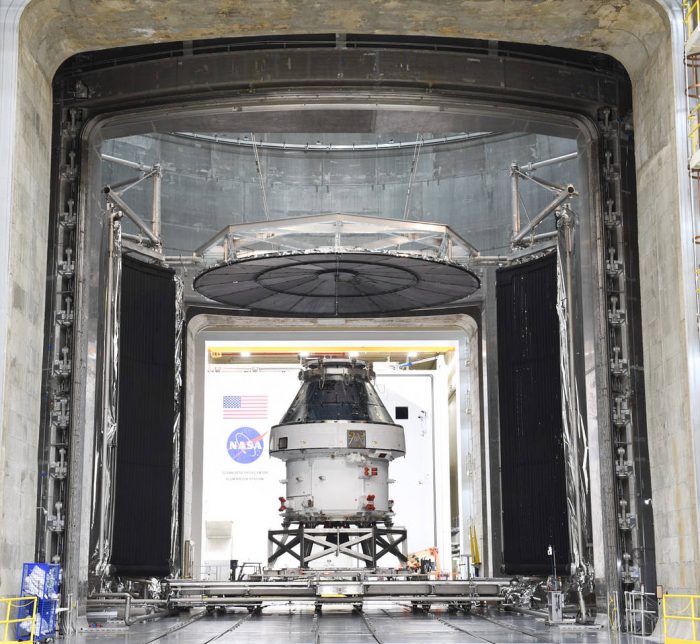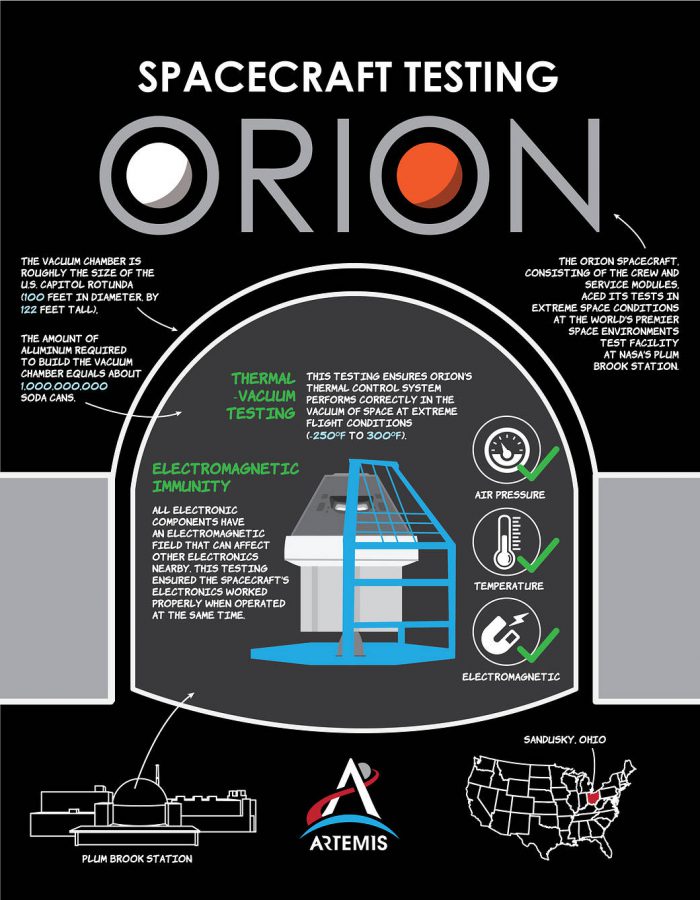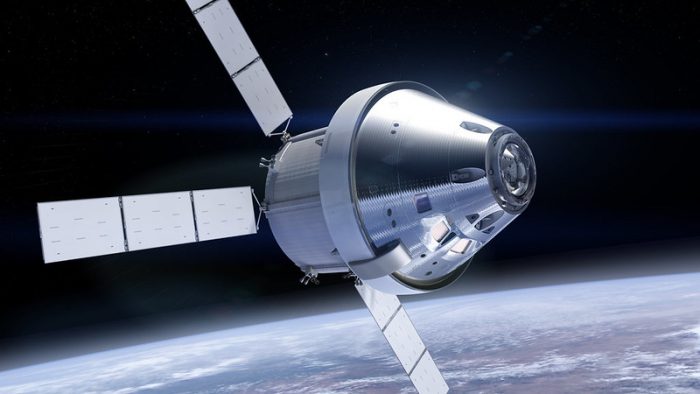Space exploration is on the verge of some incredible new missions. Ones that will send astronauts back to the Moon to stay. And then on to Mars.
The return to the Moon is known as the Artemis program. And a key part of it — the new space capsule called Orion — just cleared a big hurdle.
Onward Orion!

Orion during its testing at Plum Brook Station. (NASA)
For three months at Plum Brook Station in Ohio, the craft was put through a series of rigorous tests. It was exposed to extreme temperatures and waves of powerful electromagnetic radiation, all to make sure that the crew inside would be safe and sound. And earlier this week, NASA announced that Orion had passed with flying colours.
This means that the spacecraft should be able to withstand whatever space throws at it. Which is key because the Artemis program aims to keep humans on and around the Moon for far longer than ever before. And even that is only the beginning.
This NASA infographic explains the tests.

(NASA/PBS)
The challenges of lunar life
As we've written before, Artemis projects like Lunar Gateway (think the International Space Station of the Moon) and a permanent Moon base are coming quickly. NASA wants to land the first woman on the Moon by 2024.
And these goals will push astronauts farther and longer into space than ever before. Everything from what they'll eat to how they'll stay fit to how they'll get there to how they'll live there is being explored through experiments on Earth and on the ISS. It's the most exciting time in space exploration since the original Moon landings.
Though the first launch is still a couple years away, these tests on Orion are good news. The next step is to finish full assembly of the craft, then integrate it with SLS (Space Launch System), the most powerful space rocket ever built.
Are you ready to watch space history be made? We are! Check out the video below to see how Orion fits into NASA's big plans (starts around 1:10).
 An artist's impression of Orion in flight. This new spacecraft just passed a series of big tests. (NASA)
An artist's impression of Orion in flight. This new spacecraft just passed a series of big tests. (NASA)










Wow! That is so cool. I never new people shall live on the moon so soon!